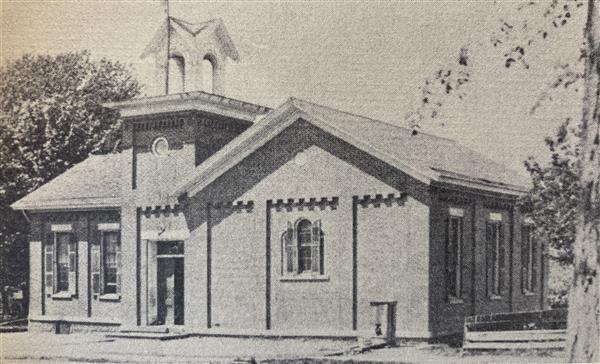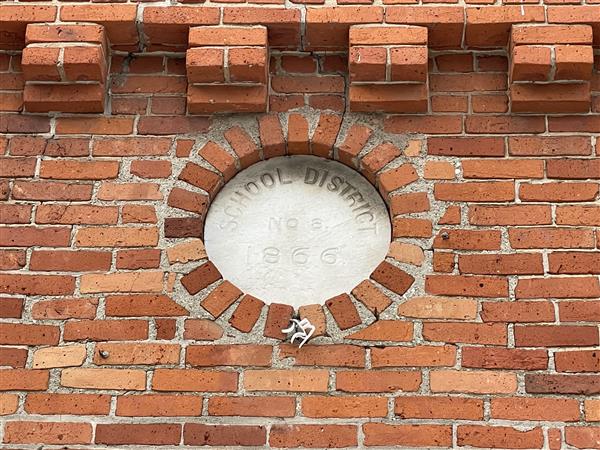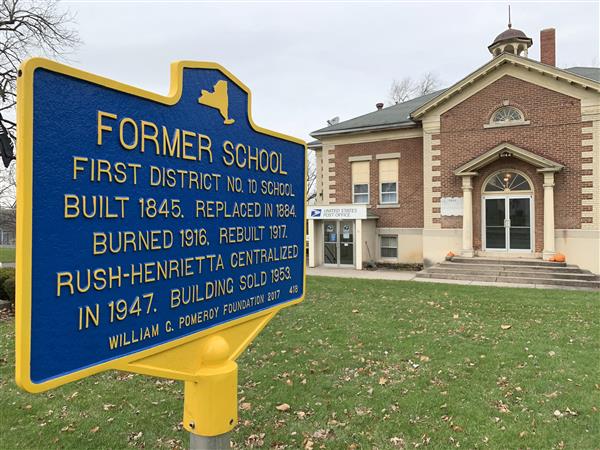- Home
- District Information
- District History
- 75th Anniversary
District Information
Page Navigation
-
District Information
- BoardDocs
- District APPR Information
-
District History
-
75th Anniversary
-
Anniversary Posts 1-15
- 1: Monroe Academy: Henrietta’s First Famous School
- 2: First Schools: Uphill, Barefoot, Both Ways
- 3: 1938: Voters Reject Creation of Rush-Henrietta Central School District
- 4: Schoolhouse Records Give Glimpse of Life 100 Years Ago
- 5: 1946: Given Second Chance, Voters Embrace New District
- 6: A Different Time: When Rush Had More Kids Than Henrietta
- 7: Choosing a Mascot: Why We're Not the Royal Falcons
- 8: Meet the Board: Rush-Henrietta’s Original Fab Five
- 9: Late 1940s: The Beginning of a Population Explosion
- 10: Breaking Ground: Rush-Henrietta’s First New School
- 11: 1952: R-H’s First New School a ‘Splendid Dream’
- 12: First Meeting of the New Board of Education
- 13: 1959 R-H Grad Still Gets on the Bus Every Day
- 14: Humble Beginnings: Two School Buses to Start
- 15: 1954: Sudden Need for a Second New School
-
Anniversary Posts 16-30
- 16: 1954-1955: Two Votes for a Second School
- 17: The Story of Gillette Elementary School
- 18: 1950s: Building a New School Each Year
- 19: 1957: Residents Press Pause, Reject Two New Schools
- 20: 1958: Fourth New School Helps District Keep Pace
- 21: 1950s: Curious Visitors Flock to New R-H School
- 22: Bill Farrell: ‘Architect of the R-H Sports Program’
- 23: 1961: Rush-Henrietta Gets a Junior High School
- 24: 1963: A New School Called Wedgewood
- 25: Elmer Gordon: A Rush-Henrietta Trailblazer
- 26: Remembering Jack Gaffney
- 27: Jack Gaffney's Incredible Connections to Our R-H Past
- 28: Remembering Wilma Jean Milhouse
- 29: 1964: West Henrietta Gets Its First New School
- 30: 1965: Fyle Elementary Named to Honor Respected Teacher
-
Anniversary Posts 31-45
- 31: R-H Family History Revealed in Historic Records
- 32: Dr. John W. Parker: Devoted to District’s Early Success
- 33: 1966: Amidst Housing Boom, R-H Opens Sherman Elementary
- 34: 1968: Rush-Henrietta Opens Its First High School
- 35: Richard TenHaken: Superintendent Who Looked Controversy in the Eye
- 36: 1970: Vollmer Becomes R-H’s Last New School
- 37: The Dome Arena: R-H and Other Legends
- 38: The Lion in the Room - Senior High School Pride
- 39: Artists in Residence
- 40: Providing an Even Start
- 41: Paul McKee: Humility Meets Great Success
- 42: Raymond Delaney Had ‘Unshakeable Belief’ in Public Education
- 43: Roger Eckers Strikes Up the Band
- 44: 1982: R-H Denies West Brighton Request to Secede
- 45: George DesMarteau: One - Make That Two - of a Kind
-
Anniversary Posts 46-60
- 46: Recognizing 75 Years of Music Excellence
- 47: Senior High School Mural Depicts 'Community of School'
- 48: 2006: Rush-Henrietta Alumni Council Established
- 49: A Bird's-Eye View of 1951
- 50: 1945: Preparing for the First Day of School
- 51: R-H is Where ‘The Rock’ Calls Home
- 52: 1974: Rush-Henrietta Takes to the Airwaves
- 53: Glory Years of WRHR: A Student’s Perspective
- 54: 1969: R-H a Trailblazer in Embracing Student Voice
- 55: 1975: Rush-Henrietta’s High School Reaches Capacity
- 56: 1975 to 1986: A Decade of Dual High Schools
- 57: 1987: New High School Name Helps Community Heal
- 58: How We Became the Royal Comets
- 59: Extracurricular Highlights
- 60: Spotlight on Bob Sagan, Act I
- 61: Spotlight on Bob Sagan, Act II
- 62: 1991: R-H Hires First New Superintendent in 20 Years
- 63: Werner Kleemann: More Than a Sports Legend
- 64: 2000: R-H Loses ‘Wonderful Mentor’
- 65: 2000: R-H Legend Returns to Stabilize High School
- 66: A Surprise Boost for Student Athletes and Musicians
- 67: Adventures of Ping: Restoring a One-of-a-Kind Painting
- 68: Dr. Ken Graham: Two Decades of Strong Leadership
- 69: R-H’s History of Putting Safety First
- 70: Girls Basketball Team Becomes Stuff of Legends
-
Anniversary Posts 1-15
- Did You Know?
- Distinguished Alumni
- First Administrators
- Norm Miller: Portrait of a Rush-Henrietta Life Well Lived
- School Namesakes
- Superintendents
- Who Was Elmer Gordon?
-
75th Anniversary
- District Map
- District Mission, Vision, and Values
- District Overview
- District Policies
- District Priorities
- District Progress Update
- Job Opportunities
- Program and Service Reviews
- Staff Directory
- Street/School Directory
- Title I
- Town Resources
- COVID-19 Reopening Summary
First Schools: Uphill, Barefoot, Both Ways
-
Before the district formed, children in Rush and Henrietta attended many small schoolhouses. Seventeen of these buildings dotted the landscape, providing a dedicated place for learning the basics close to home. There were no school buses, so children typically walked to school - regardless of the distance, weather, or terrain. Schools often were run by one teacher who sometimes taught a number of grades.
Each school was considered a district, serving a geographic area surrounding it, and was governed by three elected trustees. Children attended until the age of 15.
It was not unusual for a school to have a male teacher during the winter and a female teacher during the summer. As was common at the time, men were paid more than women, and families were often expected to provide boarding for teachers. One school reportedly had 48 students, and trustees were concerned that was too many for one teacher to effectively teach. Today, of course, Rush-Henrietta is known for its small-class-size initiative.
Some of these educational buildings still exist. A number have been modified to be private residences - a few even have historical markers to signify their noble beginnings. Others now serve different purposes.
The post office on Rush Lima Road was once Rush District No. 10 school. An annex behind the building was used to teach younger students. High school students learned in the main building.
The two-room school originally known as Henrietta District No. 8 was built on the corner of Erie Station and West Henrietta roads in 1866. Located at 774 Erie Station Road, it was replaced in 1926 by a larger building down the road. The original building is owned by the West Henrietta Volunteer Fire Department and houses a U.S. post office.
The new District No. 8 school was an impressive two-story brick structure at 649 Erie Station Road serving students for 20 years until centralization. Ethel Fyle, for whom Fyle Elementary School is named, was a beloved teacher there. Upon construction of Rush-Henrietta Central School (now Roth Junior High), the building was sold to the town of Henrietta and served as the town hall until 1964 when town offices on Calkins Road opened. The district reacquired the building, which has served as a laundry and maintenance facility, bus garage, and offices. Today, it is known as the John R. “Jack” Gaffney West Henrietta Education Building, housing the district’s special education and information systems departments.
[Post 2] #75posts75years
Click the "i" in the upper left corner of the photos below for more information.© Copyright 2021. All rights reserved.






